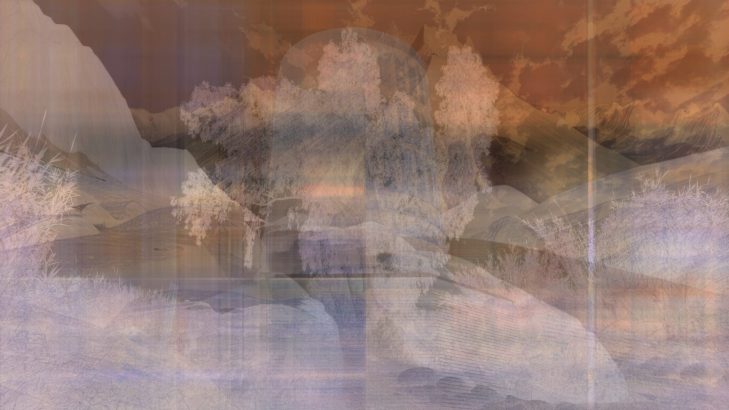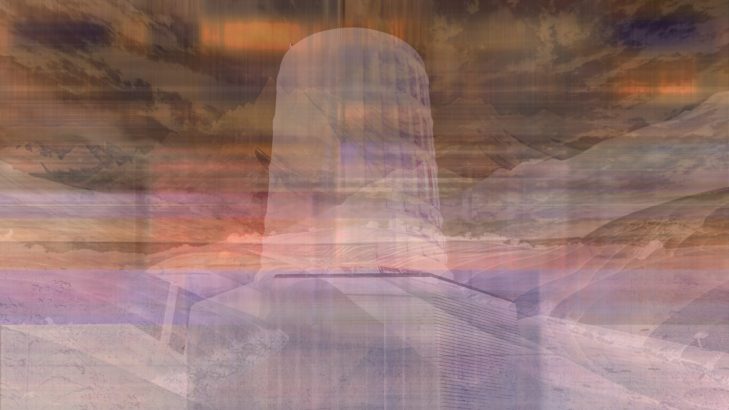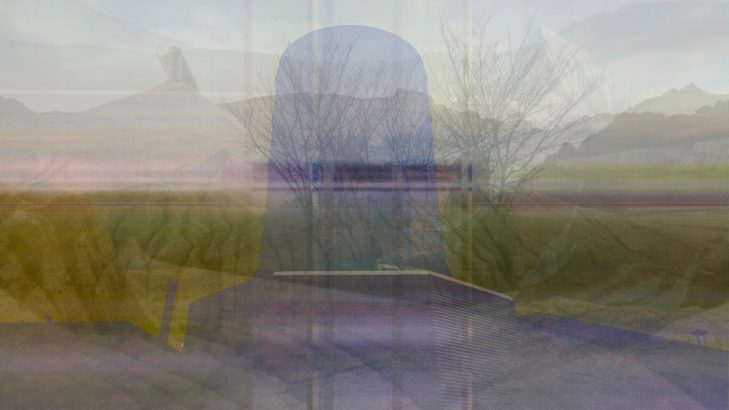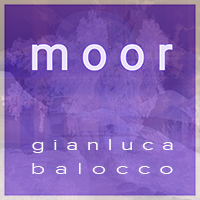



TRANSLAND
What happened when I pushed AI
to tell me about a dramatic future
like the thawing of glaciers
through my photographic images of the Italian Landscape?
Something sweetly paradoxical
similar to our helpless and complicit gaze
in front of the future of the planet.
LANDSCAPE AS A DIALOGUE OF INNER MEMORY
The landscape in Italy is a systemic cultural heritage in a sometimes fragile balance between profound transformations and cultural and aesthetic permanences. The landscape as an overall vision of different elements is an interior aesthetic experience that plays with the visual perception of depth, of the perspective lines of the colors and of the primary symbolic forms that characterize it.
The INNER LANDSCAPE experience on the climatic and anthropic changes of the Italian landscape is a work¹ that aims to involve the observer starting from his own unconscious side in the perception of the landscape as an aesthetic experience of a permanent memory and a stratification of elements that occurred over time.
Climate change in recent years has created an irreversible memory on the natural characteristics of the territory and the landscape with a circular action where cause and effect come into relation. Greater anthropization often means change of the micro climate and of the nature that belongs to that territory. Therefore, there is not only the macroscopic change such as the melting of a glacier / a symbolic and highly evocative image in this work / but infinite changed balances that can be perceived in the metamorphosis of the territory such as desertification in fragile areas or the drying up of rivers.
Real illusions
The artistic work TRANSLAND was born as a work of “the4thdimension”¹, a research where, in recent years, I have connected the photographic image with the perceptive areas of the brain through a systemic language based on neuroscience principles.
Art has always dealt with the human imagination, and today this research can move easily into new territories where everything happens before reality becomes mental representation, such as in an artificial intelligence calculation system.
In this “human game” between the experience of reality and its representation, the vision of the landscape is probably the most common mental aesthetic theme in postmodern society. In the history of man, art has often been the key that opened minds to imagination even in the most controversial periods. The aesthetic imagination is a faculty of human creativity that however requires exercise and social relationships in order not to remain a simple search for pleasure.
The inspiration for my work-experience is inspired by two elements. The aesthetic question is fundamental since the movement of Impressionism / Divisionism / and Pointillisme had shifted the attention from the subject to the visual perception of the same as a fluid and changeable action. Then no less important is the imagery on Mondrian’s landscape in particular on the natural elements placed in his work as an aesthetic dialogue between abstract ideal and natural impulse.
With this approach I worked through my creative platform connected to the visual retinal areas The4thdimension.
The Photographic works (more than 10 thousand) and those born from my interaction with the AIs were elaborated by me through the method and poetics of “The4thdimension” which made them unique works with their own potential and typical systemic structure that belongs to it.
Artificial intelligence³ is therefore part of this work TRANSLAND as an imaginary point of view of a possible slightly autistic interlocutor on a theme where the A.I. he has devoured all kinds of information but has never experienced anything about the emotional perception of climate change.
As an artist I am not at all afraid that artificial intelligence can generate such strangely refined images, but I am certain that the emotional result of my interaction with them is authentic and artistic as it happens when I use the technology of the photographic device that in the work TRANSLAND bears witness with my photographic shots³ to the current state of the landscape.
¹ The4thdimension is a sensorial artistic work based on photography and the perception of reality and images. It is an individual sensorial experience that starts from a primary photographic image that appears to each observer on the electronic canvas at the beginning of each experience. Each user experiences their own inner vision connected to their own brain areas through the detections of complex real-time technological systems.
It is a participatory and interactive visual art work, where the observer enters into a deep relationship with the potential state of the artistic work that always depends on his deep gaze. Each observer walks through the images, therefore moving on a “layered territory” of systemic relationships.
² In this period there is a broad debate on the topic of A.I. and, as with all the new technologies that have been introduced into our social system, A.I. will also go from novelty to distrust and rejection over time until they become normal. Just think for example of to the appearance of photography at the end of the 19th century, considered vulgar and harmful to art even by intellectuals such as Baudelaire himself. Today, a photo taken with our mobile device has become the main language of relationships. Artificial intelligence can be a tool for representing reality born from the human mind, which by its biological constitution is a “mechanism” that creates reality autonomously. Like the photographic device that records reality with a shot, A.I. also creates its own snapshots taken from a big world of data. However, the result remains exquisitely human. It is surprising to see how A.I. behaves in a non-homogeneous way, with traits of racism and autistic naivety. But how could a system that is based only on data and has no biological affinity with our species fill a certain cultural void?
In this debate on big data, a comparison with neuroscience is increasingly urgent. I think this is the new direction of humanity. We will not need to run faster and faster but to be able to generate new visions that arise from our awareness. Perception and visual imagery both arise in our brain at very high speeds, in which reality is recomposed through experiences. Our brain is not a calculation machine but has a systemic, biological and chemical complexity. As with A.I. systems, it behaves in a decentralized and non-hierarchical manner. Unlike A.I., however, our mind has a biological nature that allows us to think and create through a much more complex heritage than big data, that of emotions. It is on this point that the difference arises between the calculation speed of an artificial intelligence machine and the depth of variables and systemic connections that are the infinite potential of our brain.
³ This work is based on three years of photographic research through tens of thousands of images of Italian landscapes (from Trentino to Sicily) that have undergone strong transformations. The landscape in this sensorial work is understood as an interior perception and emotional palimpsest that leads the observer to search within himself for the concept of balance and beauty.
